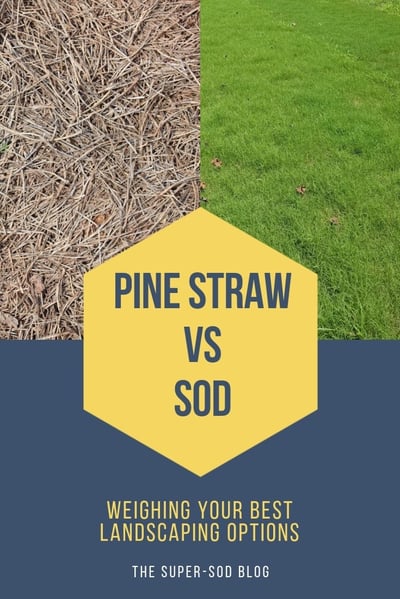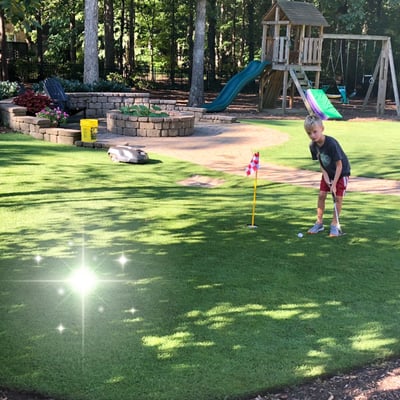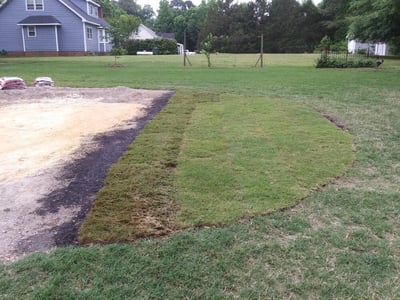
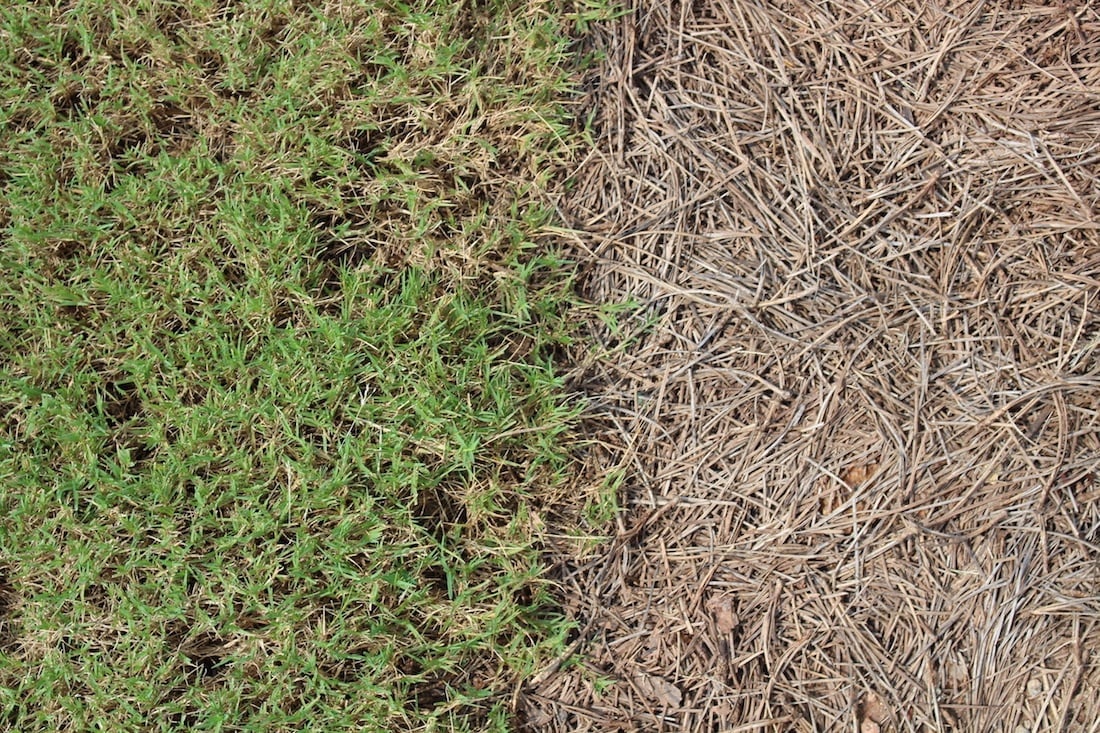
Whether your house is front-and-center in the cul-de-sac or hidden at the end of a long driveway, the first impression folks have of your home is important. The walk to the front door sets the scene for the entire visit, and we know you don’t want to break the bank in the process of keeping your most influential landscaping areas in top shape.
Enter pine straw – the popular groundcover that’s sprinkled along the edge of millions of homes. This classic groundcover is common for spreading around ornamental landscape plantings, and it’s often considered the cheapest option. However, your pine straw costs may be adding up a little more quickly than you thought and sod could be a less expensive option.
In today’s blog we’ll take a look at the cost comparison between maintaining pine straw and laying sod.
Why Consider Alternatives to Pine Straw
Pine straw is a longstanding solution for suppressing weeds and making your perennial plants pop in color comparison, but the life of pine needles is ephemeral at best. Whether they’re washed away by rain or blown into the street with an overzealous leaf blower, pine needles only last for a season.
This means you’re stuck replacing pine straw beds at least twice a year to keep the beds looking fresh and ready for summer barbecues and holiday gatherings. Spreading pine straw is a time-consuming task that you pencil in during a rare free Saturday or an activity you keep forgetting until the needles you have left are sparse and sun-faded.
If you get sufficient sunlight in these pine-straw covered areas, rest assured that there is another way – an easier and more permanent solution than hauling bales of straw bi-annually. It’s sod!
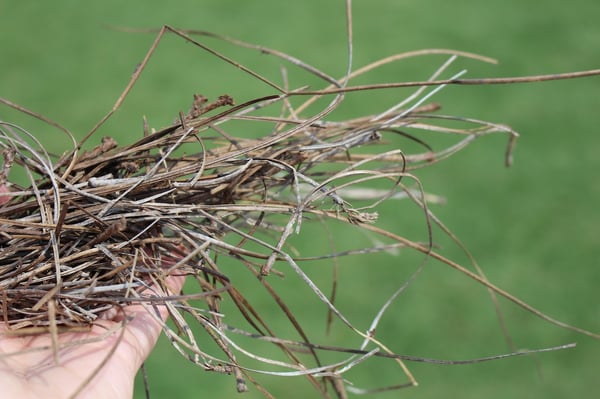
Sod vs. Pinestraw – A Price Breakdown
I know what you’re thinking – why would I want sod instead of pine straw? Isn’t ready-to-lay grass so much more expensive than picking up a few bales of pine straw twice a year? Actually, the cost isn’t that much different, and in comparison with pine straw, sod paysfor itself in the long run.
A pallet of sod covers 500 square feet, and the price can range from $200 to $400 per pallet. (Sod price depends on your local market. These prices are based on 2018 sod costs in GA, NC, and SC. Request a quote for current prices in your area.) A medium bale of pine straw covers roughly 28 square feet and lasts for around 6 months.
Your first application of pine straw should be a depth of 3 inches. At $4 per bale, you’ll spend $71 on the initial application of pine needles to cover 500 square feet of your property. Each subsequent application of pine straw should be 2 inches deep will and cost $48.
This means you can pay for a pallet of sod within 4-6 applications of the pine straw (depending on the type of turf). That’s as little as two years!
While the amount of money you spend on pine straw will remain the same or increase year after year, sod becomes significantly cheaper to maintain in the second year and is a long-term solution.
The Curb Appeal Benefits of Sod Over Pine Straw
Grass also adds to your curb appeal more than pine needles – a worthy option for increasing the value of your home – because green brightens and enlivens a landscape more than brown pine straw does.
If you love the woody hue of fresh pine straw, you know its stark brown coloring is short-lived. In areas where pine needles see the sun, they quickly fade. Inconsistent sunlight can mean uneven fading, various shades of brown, and yet another detail to worry over.
With turf instead of pine needles, you can invest in the health of your prized plants by topdressing trees and shrubs every season instead of fretting over the shade of brown that surrounds them.
All Things Considered
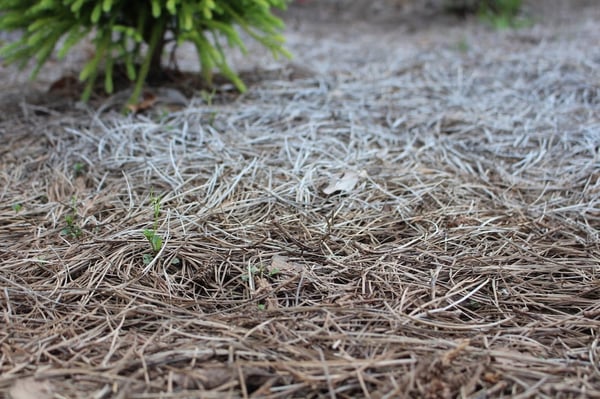
Don’t get me wrong. We love pine straw, and it’s necessary for different areas of your landscape.
If you get less than 3 hours of sunlight per day around large trees or the edge of your house, pine straw beds will be necessary.
Elite Tall Fescue needs about 3-4 hours of sun, and our shade-tolerant warm-season grasses require a minimum of 4 hours direct sunlight per day (non-shade tolerant types like Tifway Bermudagrass require 8 hours). If your lawn receives at least those amounts of sun, consider planting grass instead of pine straw to make your investment count!
Make the Switch
If you’re ready to dress up your pine straw plots with new grass, give us a call or request a quote online! We’ll be happy to help you with choosing the best option for converting from pine straw to perfection!
